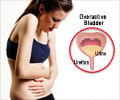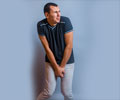Urinary incontinence is one of the most embarrassing problems, more common in women than men. It is a widespread medical issue shared by millions.
Usually middle aged and older women deal with urinary incontinence although younger women – during pregnancy and immediately after childbirth suffer from this problem which is not openly spoken about, but very common.Loss of bladder control is urinary incontinence – this happens when sometimes a few drops of urine leak out due to laughing or coughing or sneezing. Sometimes it is a more uncontrollable wetting.
Types of Urinary Incontinence:
When urine leaks out of the bladder due to coughing, sneezing or lifting heavy objects it is called stress incontinence. This is normally caused by childbirth and after menopause. When women stop having periods the body stops manufacturing the estrogen hormone and studies believe that this weakens the urethral tissue of the bladder.
Urge incontinence –happens when the bladder is over active; you suddenly find the urge to urinate – without being able to control the urgency. This can happen in a minute or sometimes within seconds of warning. This happens during a urinary tract infection, Parkinson’s disease or even multiple sclerosis.
At times you cannot seem to empty the bladder completely every time you pass urine and instead experience a constant dribbling of urine – this is called overflow incontinence.
Fortunately there are some basic treatments which can help urinary incontinence
Another simple method to regain bladder control would be to fix bathroom time – that is pass urine at fixed timings, without feeling an urge. Increase the gap as you start feeling more confident. Taking certain medications may also help – though these must be taken after seeing your physician only.
In some cases a doctor or physician may insert a pessary – which is a ring like device – inside the vagina. It pushes against the wall of the urethra and reduces stress leakage.
One option is electrical stimulation of the nerves which control the bladder – this is done under medical supervision.
Some lifestyle changes also help those with urinary incontinence
Limit the amount of alcohol intake as alcohol is a diuretic and can add to incontinence. Tea and coffee both have caffeine which can irritate the lining of the bladder. Chocolate is another treat it would be better to limit due to the caffeine content again.
Sugary stuff like corn syrup, honey and fructose are again thought to aid incontinence. Carbonated drinks – especially colas- can aggravate the condition due to both caffeine and carbonation. Spicy food will fan the flames of incontinence as will citrus fruits due to their acid content. Some research has linked smoking with incontinence due to recurrent instances.
Sometimes wearing a tampon or a pad serves well enough for those with an occasional dribble, while others have to look for more permanent options like surgery.
Source-Medindia












